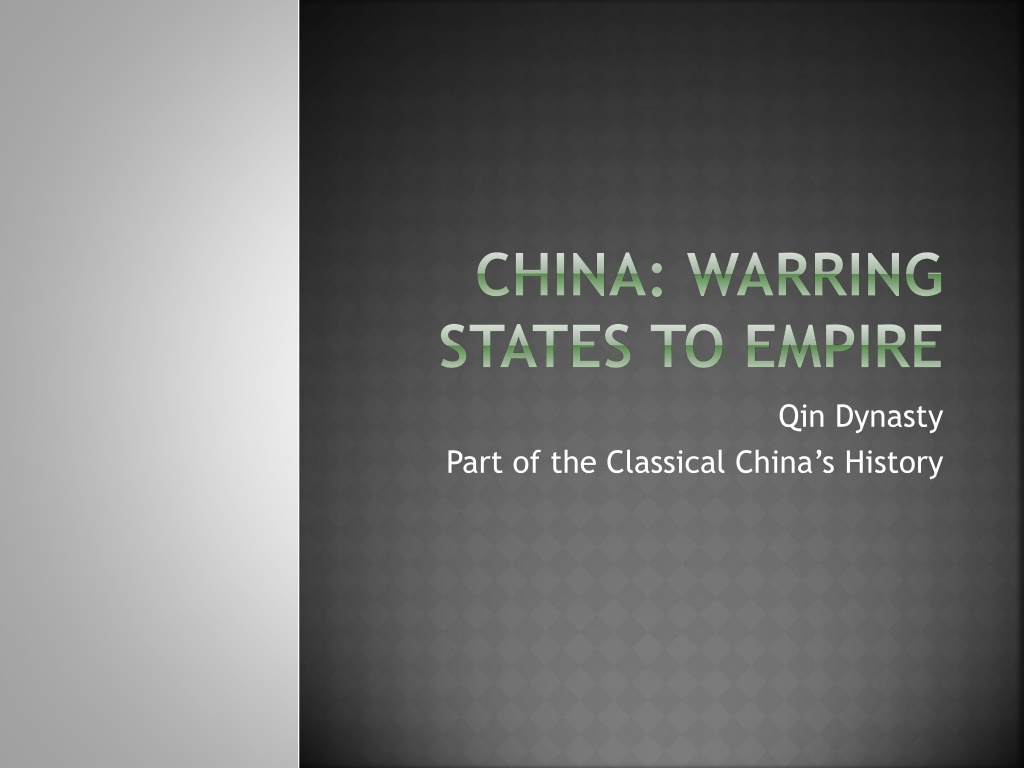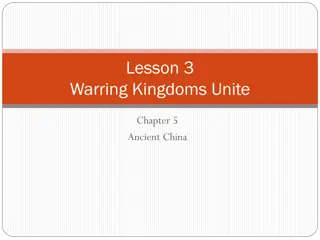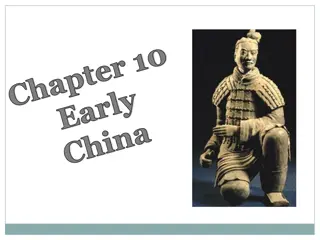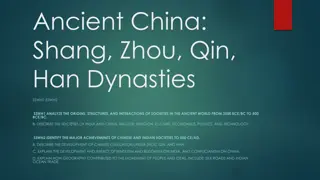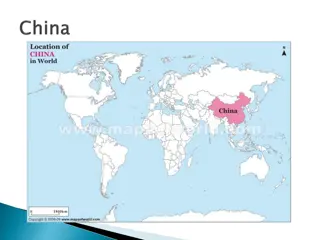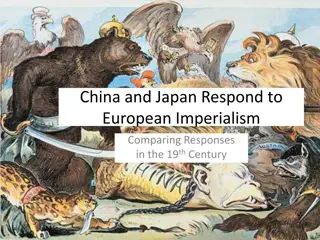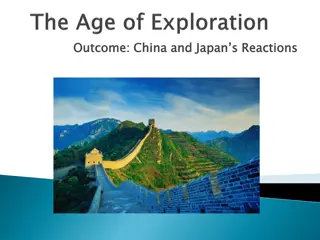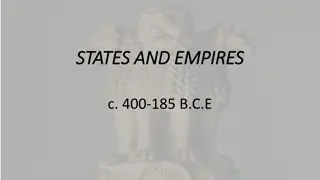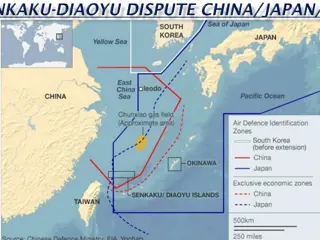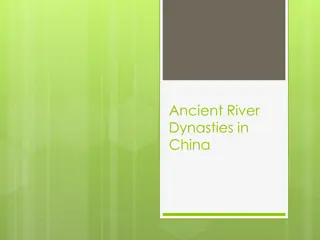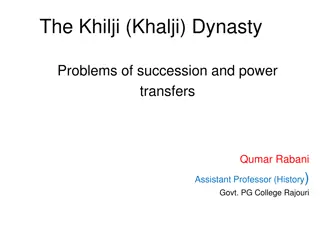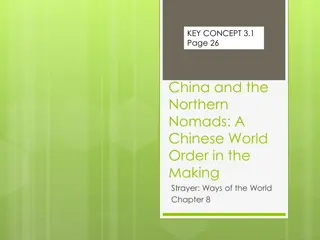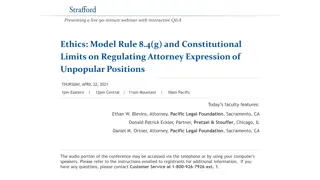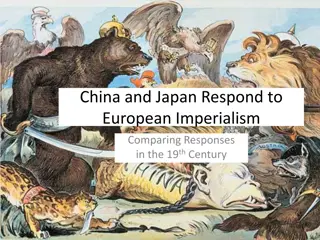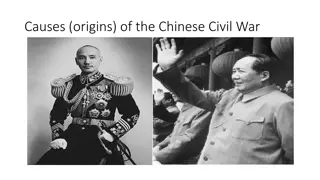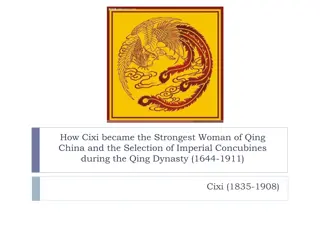Rise and Rule of the Qin Dynasty in Ancient China
The Qin Dynasty emerged from the chaos of the Warring States period with the goal of unifying and expanding China under the leadership of Shi Huangdi. The dynasty implemented legalism as a political philosophy, emphasizing clear rules and harsh punishments to enforce state authority. Shi Huangdi exercised complete control over society, introducing reforms such as eliminating primogeniture, expanding the army, and constructing the Great Wall. Despite achievements in infrastructure and governance, the Qin Dynasty's use of brutality and force led to societal unrest and eventual downfall.
Download Presentation

Please find below an Image/Link to download the presentation.
The content on the website is provided AS IS for your information and personal use only. It may not be sold, licensed, or shared on other websites without obtaining consent from the author. Download presentation by click this link. If you encounter any issues during the download, it is possible that the publisher has removed the file from their server.
E N D
Presentation Transcript
CHINA: WARRING STATES TO EMPIRE Qin Dynasty Part of the Classical China s History
CREATION OF THE EMPIRE Regarded as restoration Xia, Shang, and Zhou dynasties had created a Chinese state Fell apart by 500 BCE Age of warring states Seven competing kingdoms Multiple states were thought to be unnatural
QIN DYNASTY Emerges out of end of Zhou Dynasty/Period of Warring States Founder: Shi Huangdi ( First Emperor ) Goals: Unify and expand China Restore order
UNIFICATION BY SHI HUANGDI Ruler of Qin, 221-210 BCE Adopted legalism as political philosophy Clear rules and harsh punishments to enforce state authority
LEGALISM Practical, political reaction to Confucianism Han Feizi - 3rd century BCE Powerful and efficient government is key to restoring order Laws will end civil war and restore harmony Rewards to good subjects and punish disobedient Rulers must control ideas and actions of people Favored by Shi Huangdi during Qin dyansty
LIFE IN THE QIN DYNASTY Social Primogeniture eliminated (practice of having eldest son inherit all property and land) Nobles must leave land and live in Emperor s court Political Emperor had complete control over all aspects of society Use of brutality and force to accomplish goals (Great Wall) Bureaucracy (not of the nobility) expanded to help control all regions National census Single law code Interactions Army expanded to crush rivals and regional rebellions Expanded territory of China, including Hong Kong Influenced parts of Vietnam through conquest Expanded infrastructure to increase interactions
Cultural Confucianism looked down upon and followers persecuted Legalism promoted Architectural: Initiates construction of Great Wall; Terracotta Soldiers/Tomb of Shi Huangdi Uniform written language Banned books Economic Introduced standard weights and measures Eliminated the very rare practice of slavery Forced labor necessary for construction projects Extremely high taxes Sponsored agricultural projects (irrigation) and manufacturing of silk
TERRACOTTA SOLDIERS/TOMB OF SHI HUANGDI
POSITIVE CREATION Standardized weights, measurements Currency Written chinese Axle lengths for carts
QIN DYNASTY COLLAPSES Shi Huangdi Extremely paranoid; killed off suspected enemies (nobles, intellectuals, warlords) Desire to control EVERYTHING High taxes, forced labor Shi Huangdi dies in 210 BCE; followed by 8 years of peasant revolts to determine successor - winner establishes Han Dynasty Collapses 206 BCE Han dynasty 206 BCE-220 CE Kept Qin centralization Less harsh
